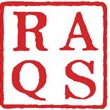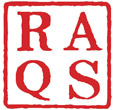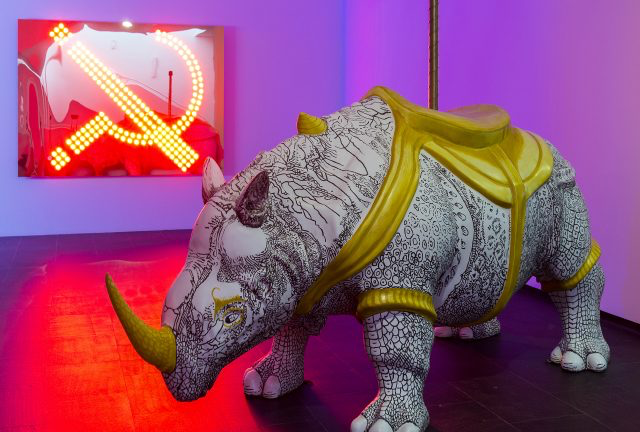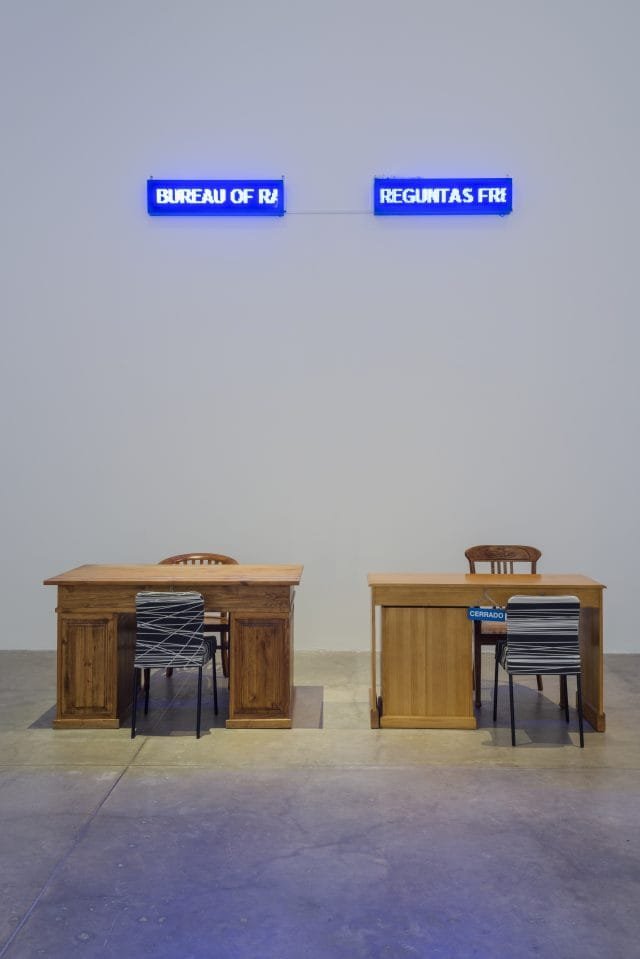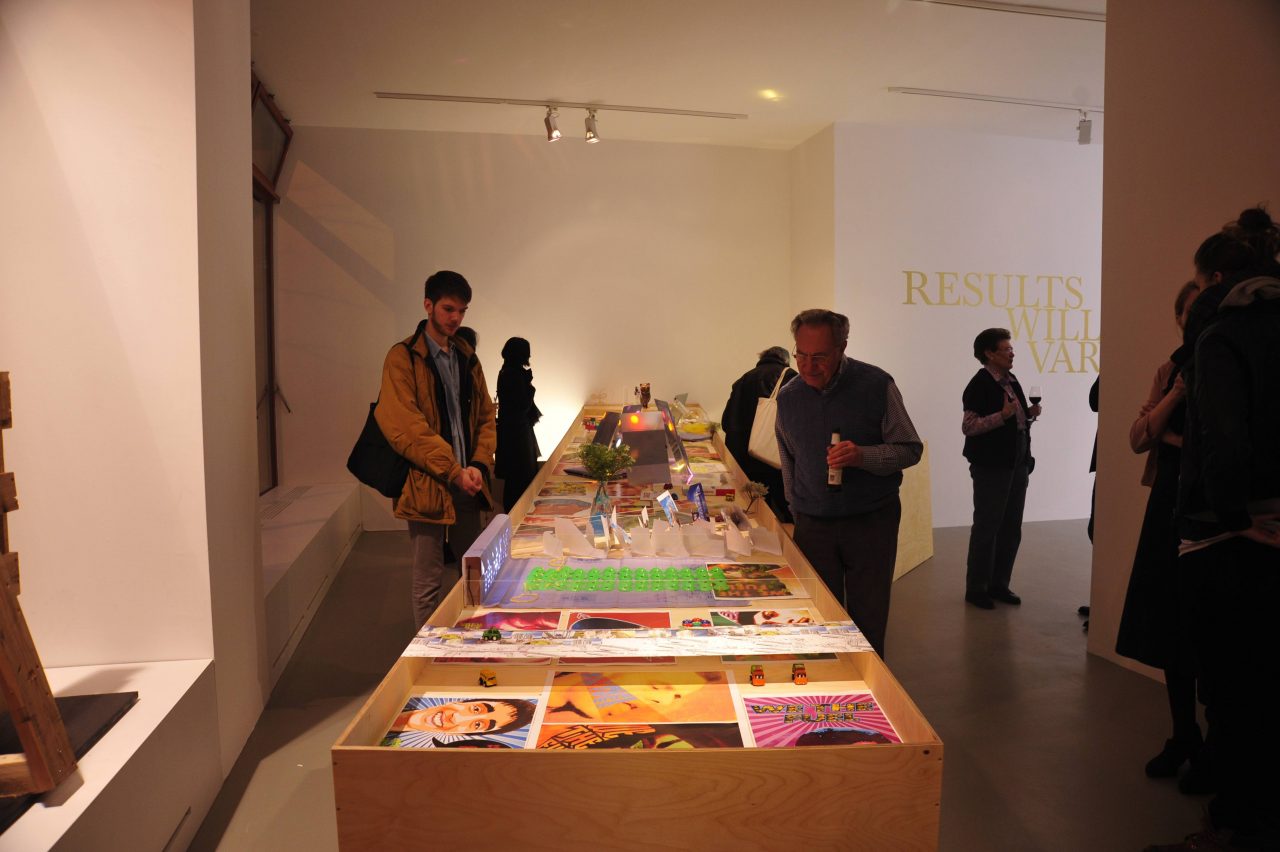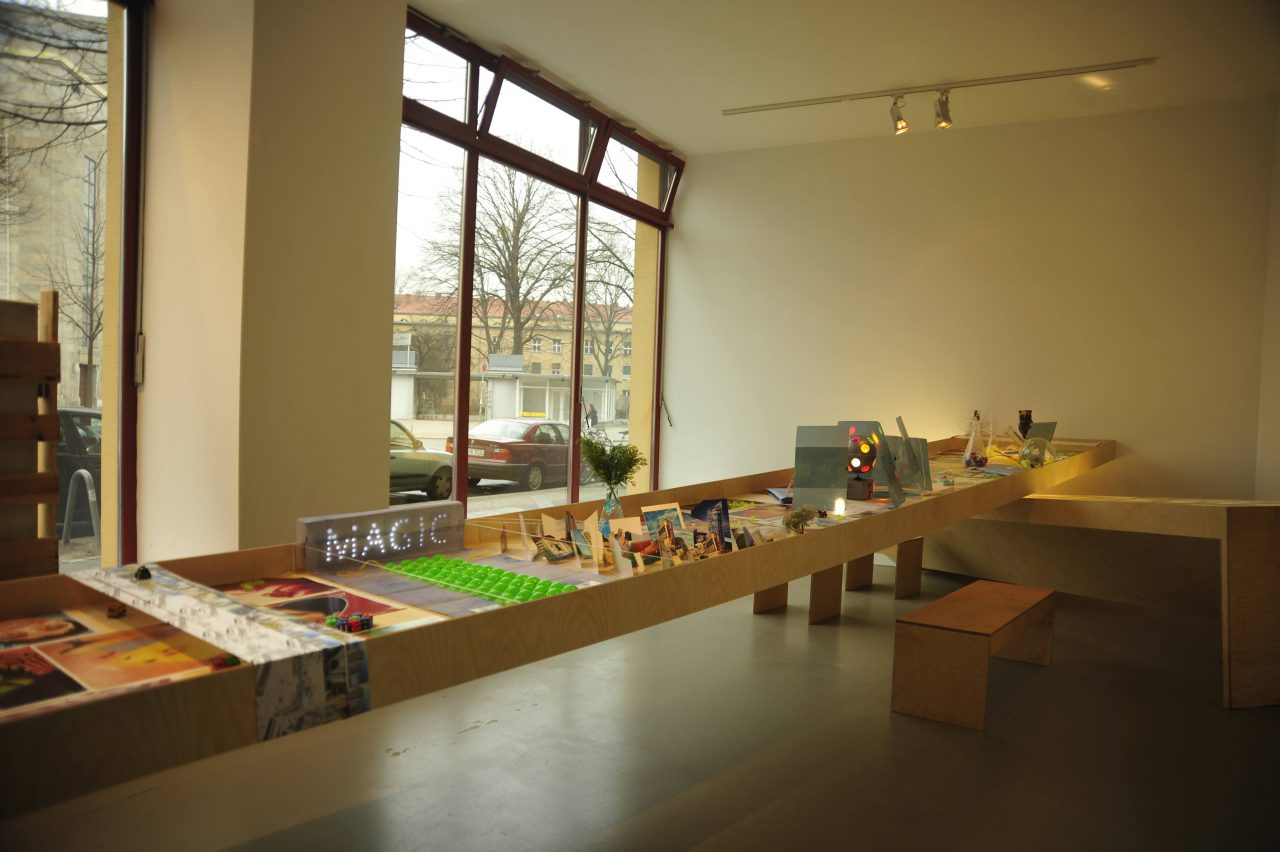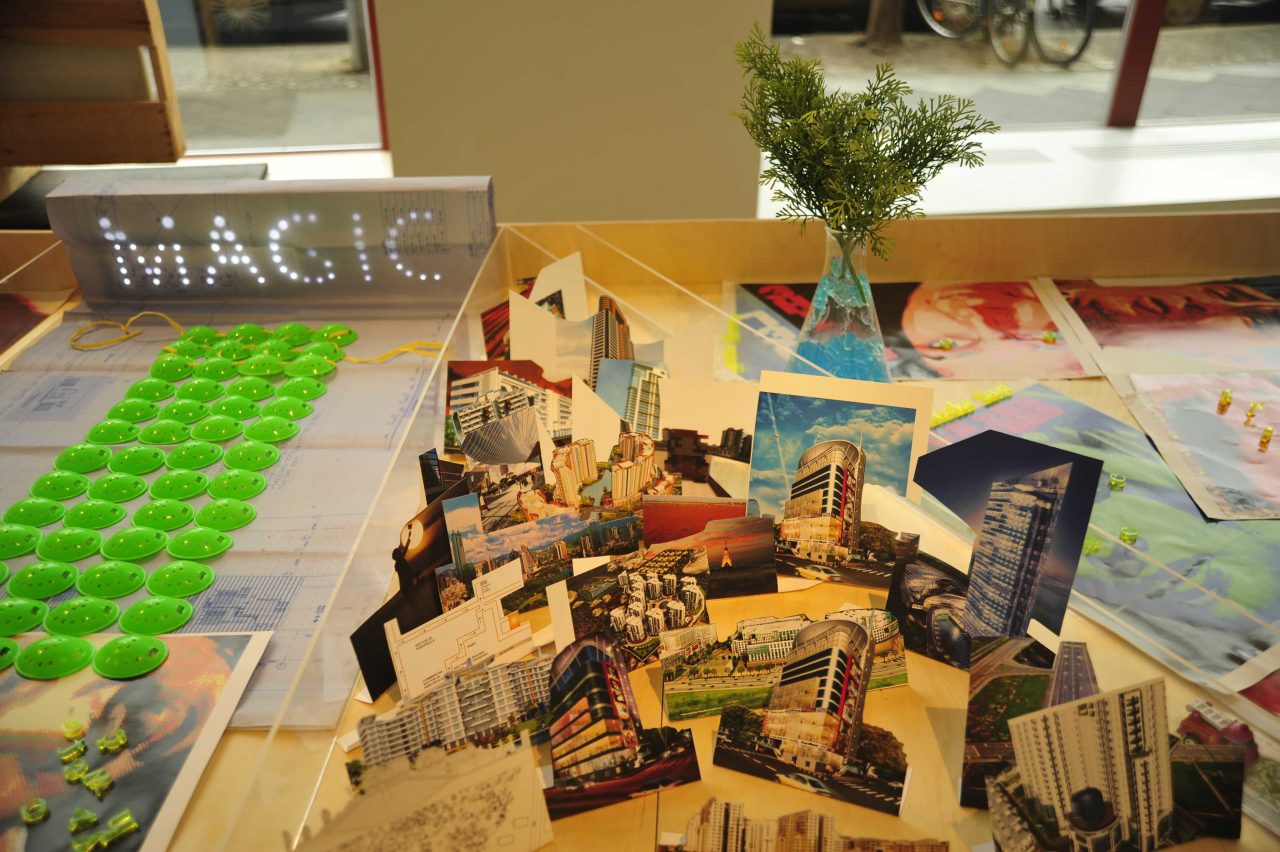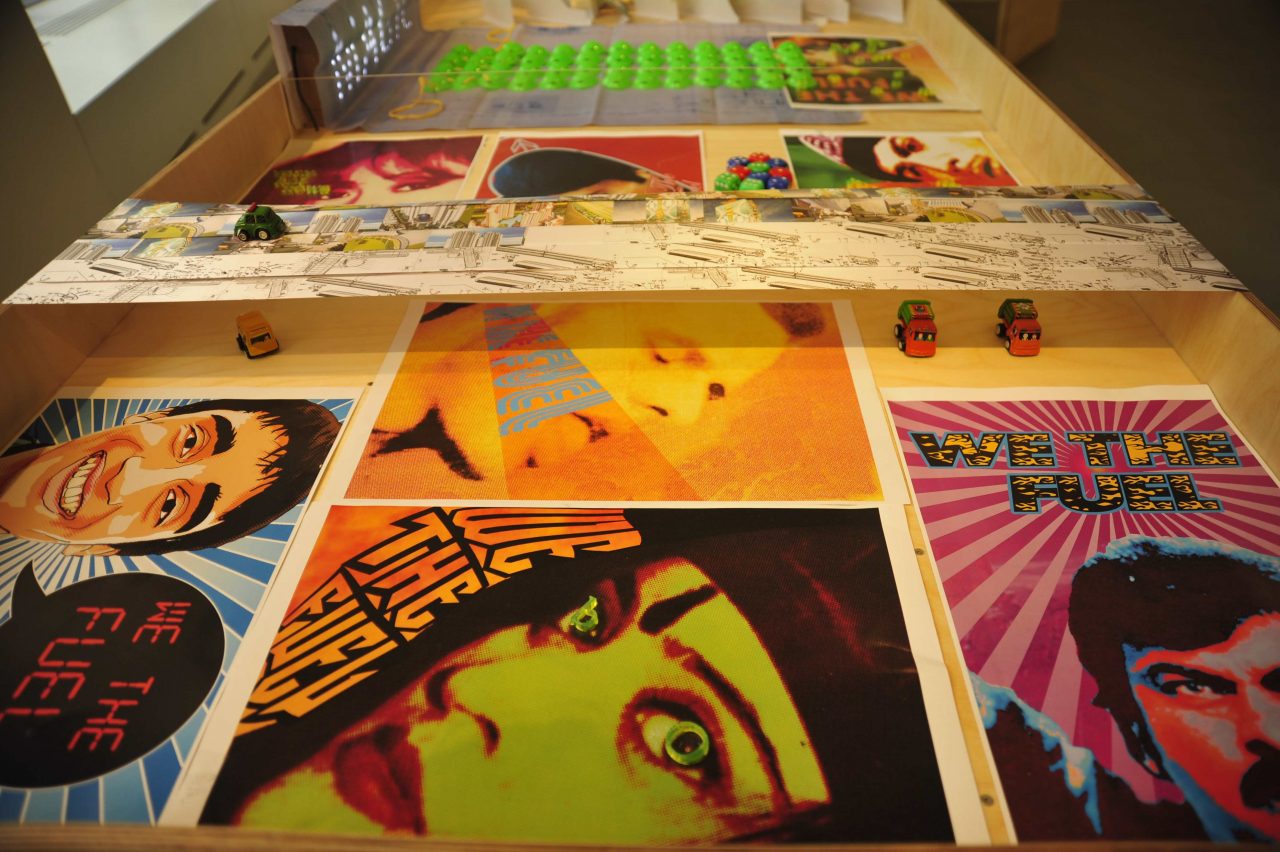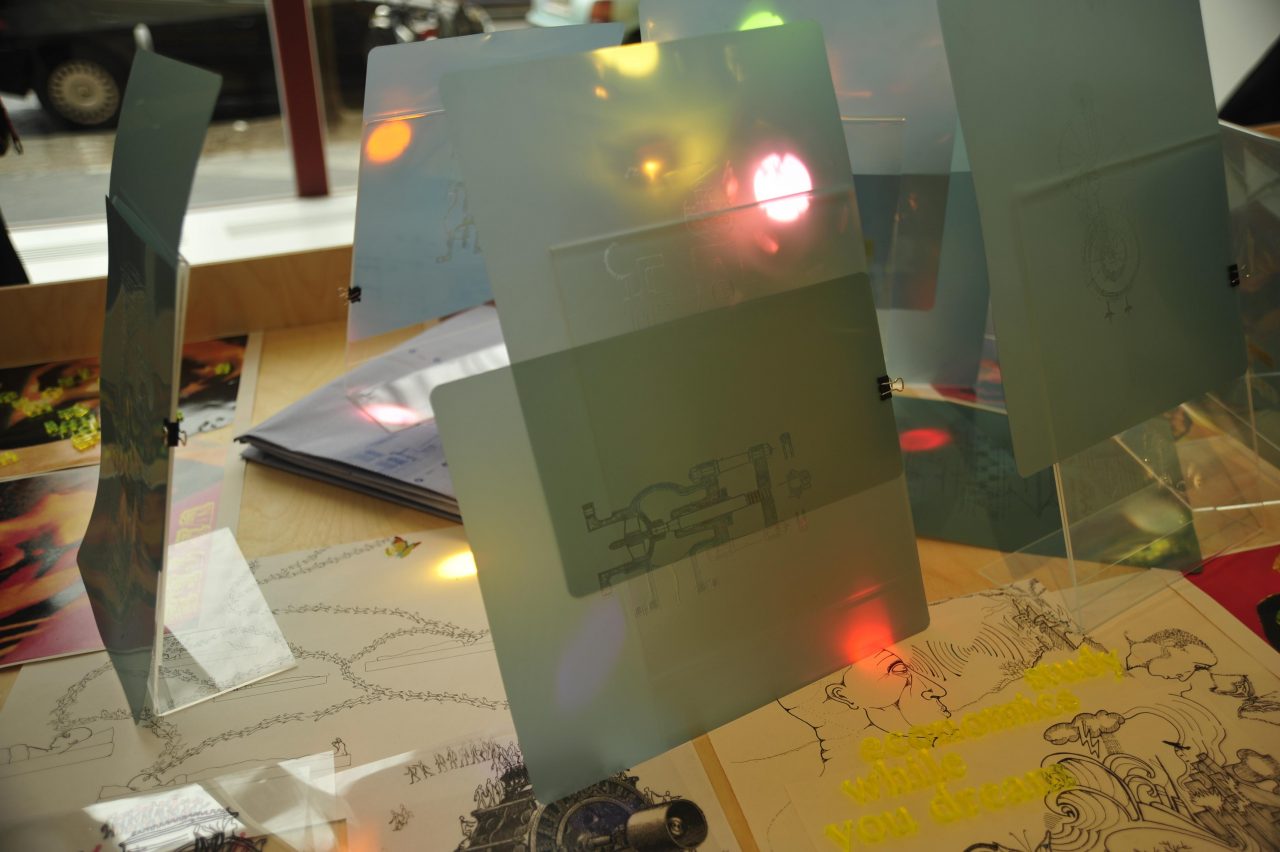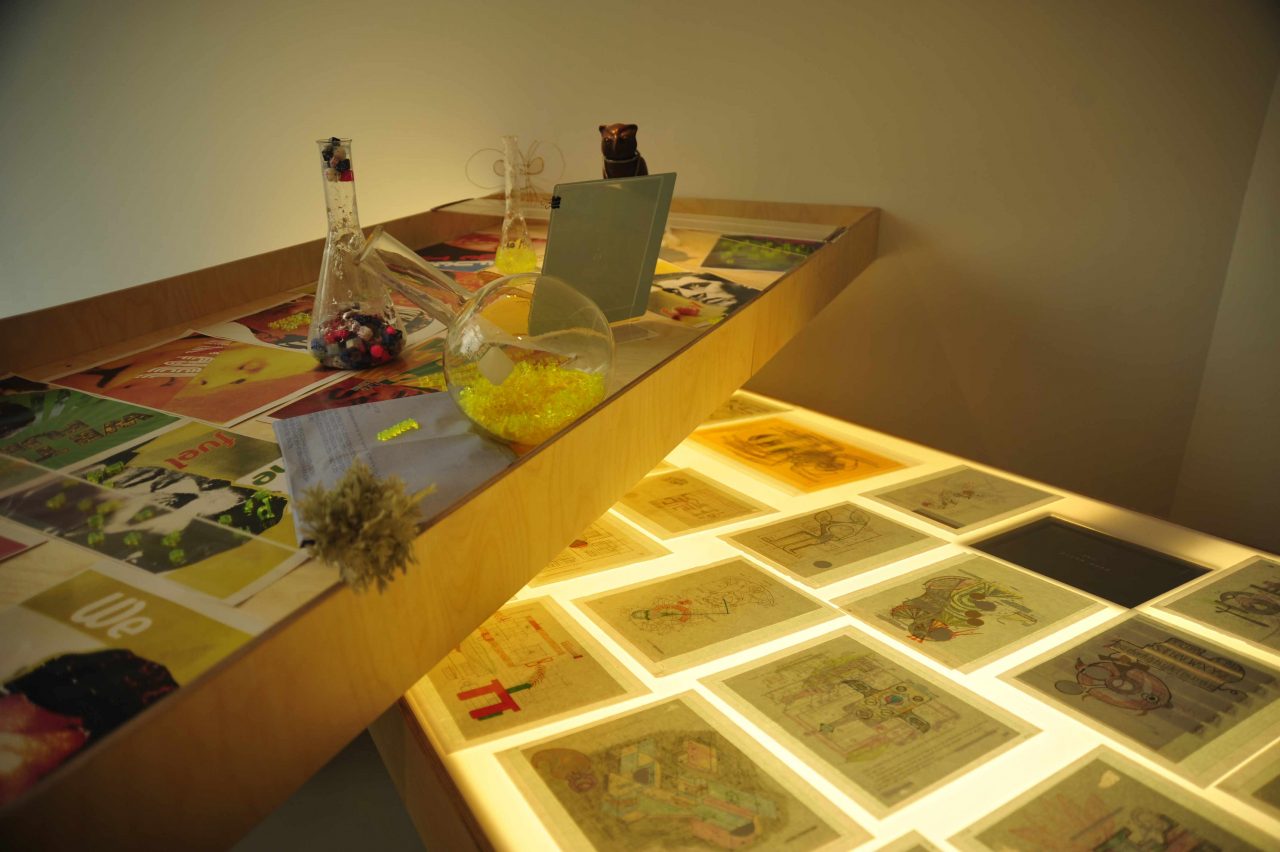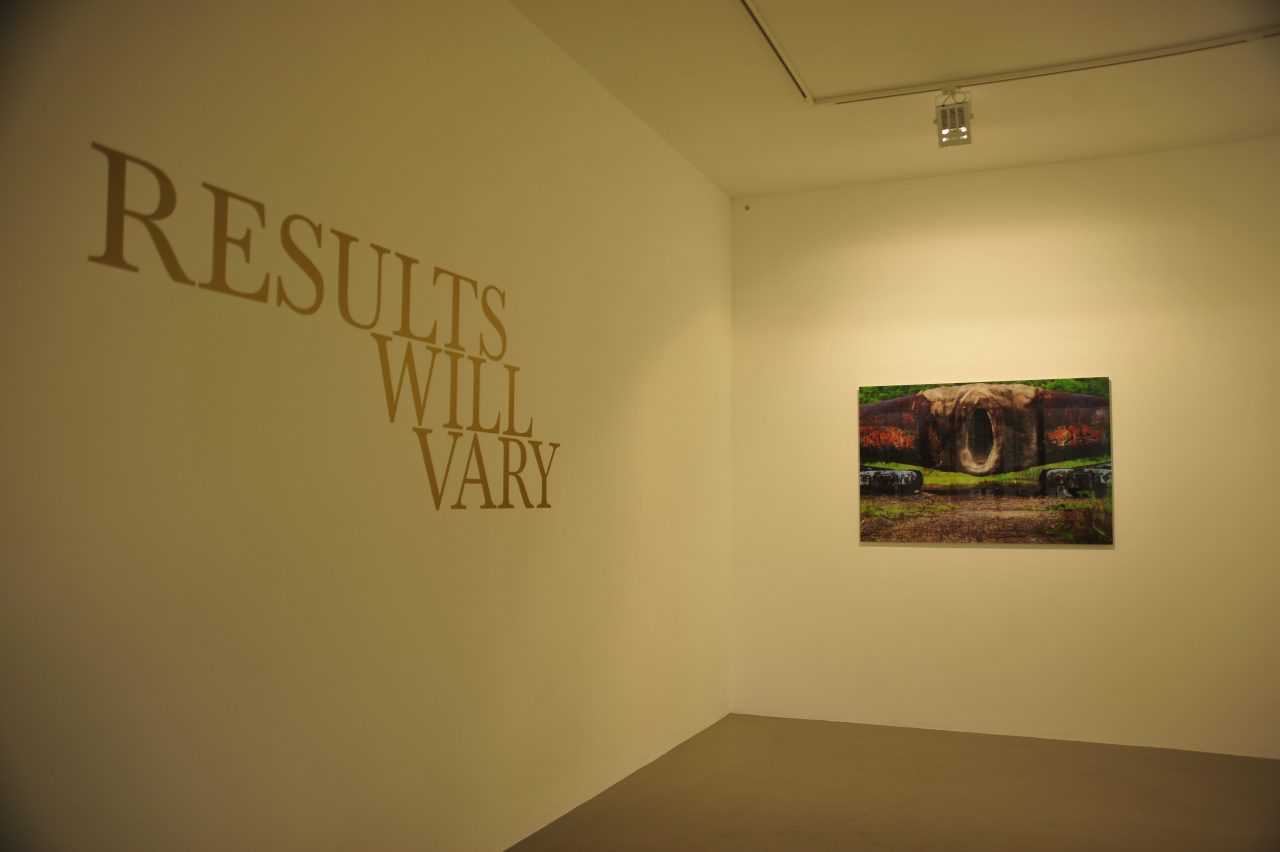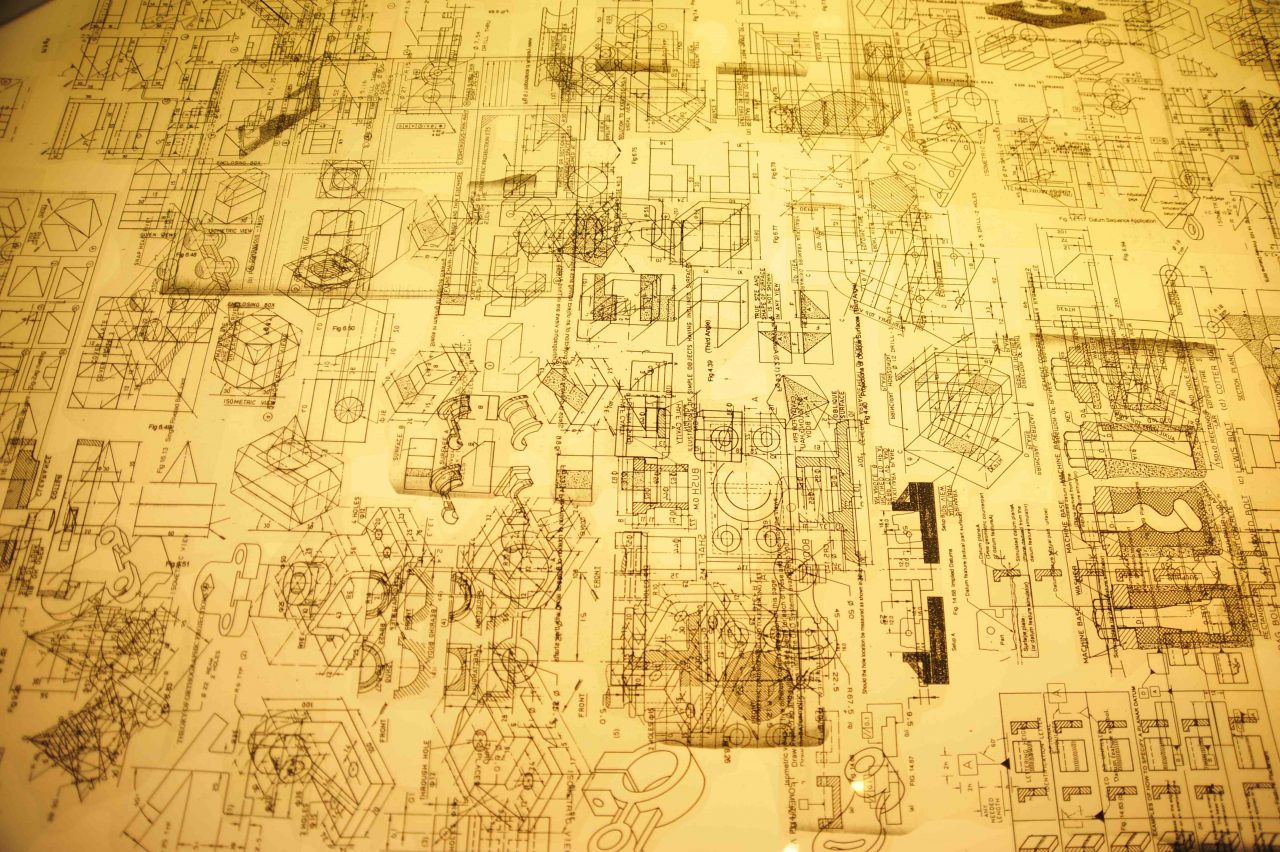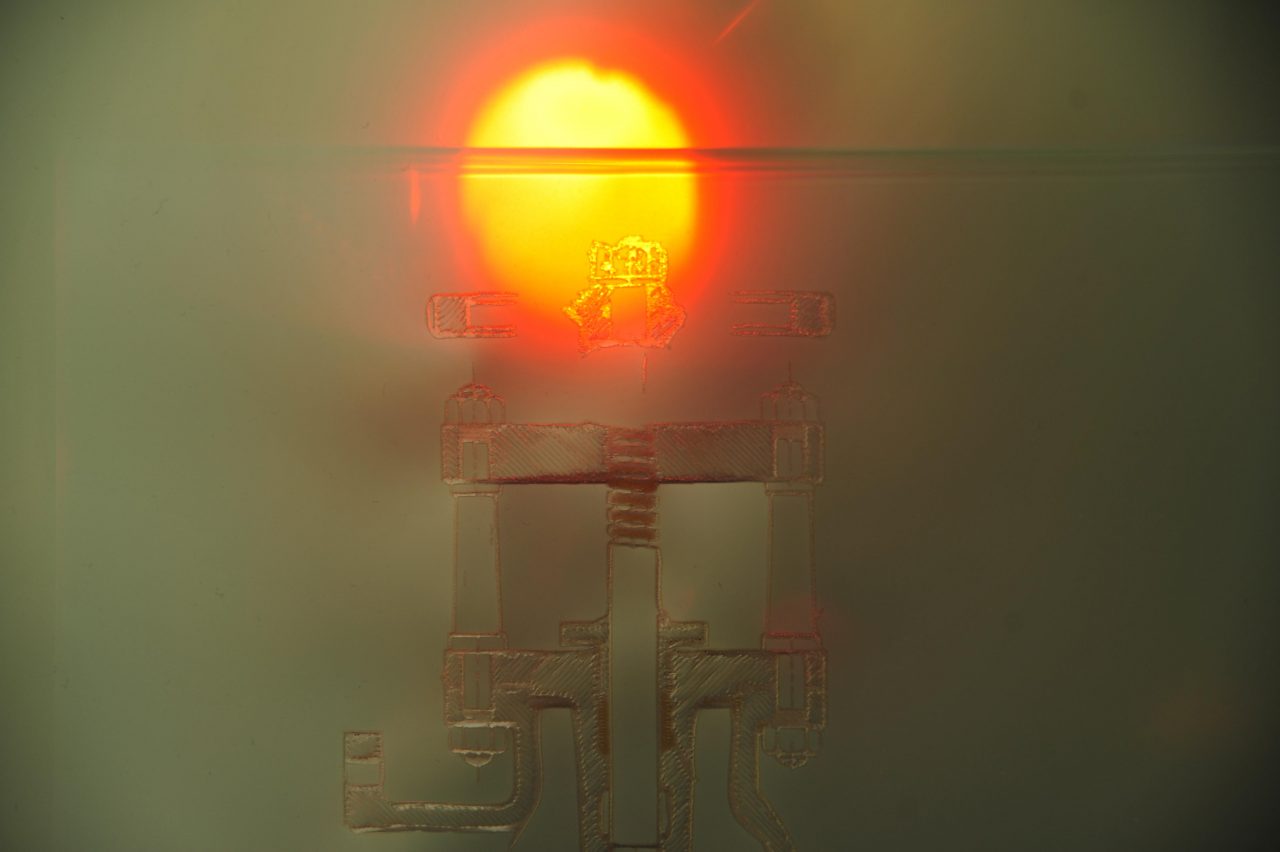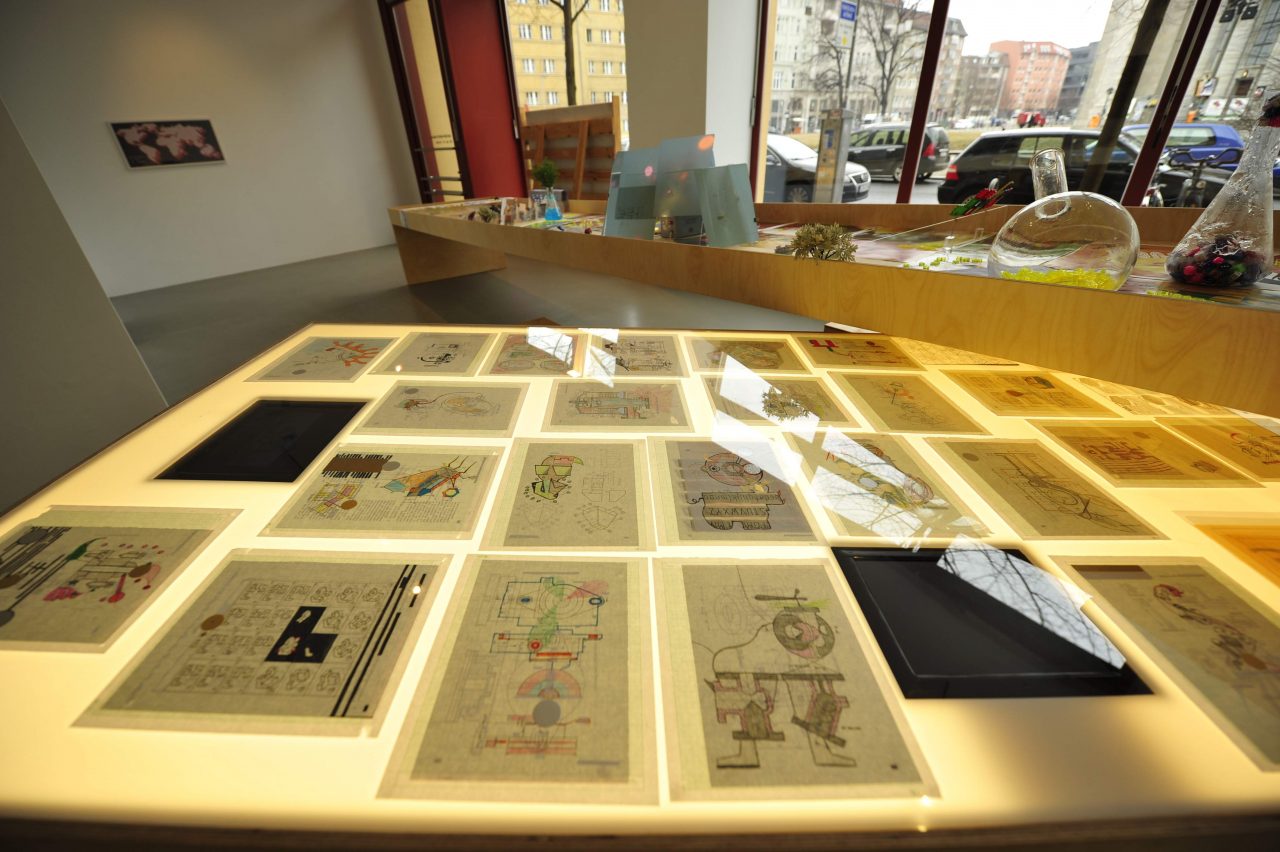It’s Possible Because It’s Possible
Centro de Arte Dos de Mayos (CA2M), Madrid (2014); Museo Universitario Arte Contemporaneo, Mexico (2015); Fundacion PROA, Buenos Aires (2015)
It’s Possible Because It’s Possible is the fruit of a collaboration between Museo Universitario Art Contemporaneo (MUAC), the Centro de Arte Dos de Mayo (CA2M), and the Fundacion PROA. It offers more than just a new opportunity to tighten cultural relations between Spain, Mexico, and Argentina. It also poses a bold proposal to reflect on the reality of the hand of Raqs. Through their poetics, this exhibition establishes a complicity with spectators so that together they might undertake a journey through the history of thought.
Activo y Pasivo (Assets and Debts)
Room Installation Size: 10 x 10 x 7 ft. Wood and glass room, wallpaper, tubelights, carpet
The missing fourth wall of a room saves it from claustrophobia. The walls, and slightly low ceiling, are papered over by prints that create the illusion of the room folding in on itself, as well as multiplying. So that the surface of one room seems to hold the secret of another. The nearly replicant room within the room suggested by wall-paper is just short of being identical to itself. Odd things are askew, or not quite what they seem to be, like pieces in a ‘spot the difference’ puzzle image.
The rooms are as alike, or as apart, as investment and insurance, two mechanisms designed to administer, anticipate and forestall, risk, speculation and the possibility of boom and bust. Does the imprint of one room on another indicate caution or audacity? This is a space of ambivalence, caution only emphasizes the latency of risk. Everything is anticipated, yet anything is possible.
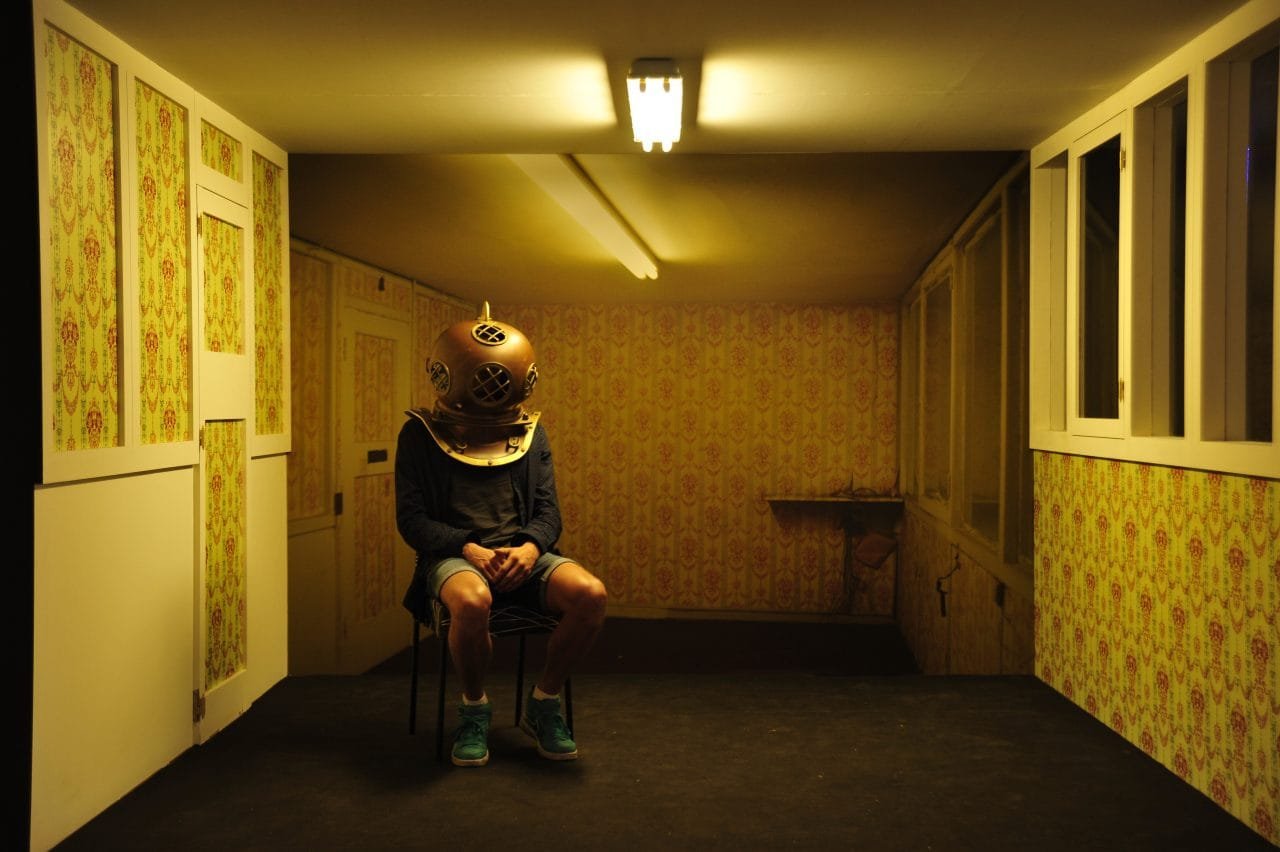
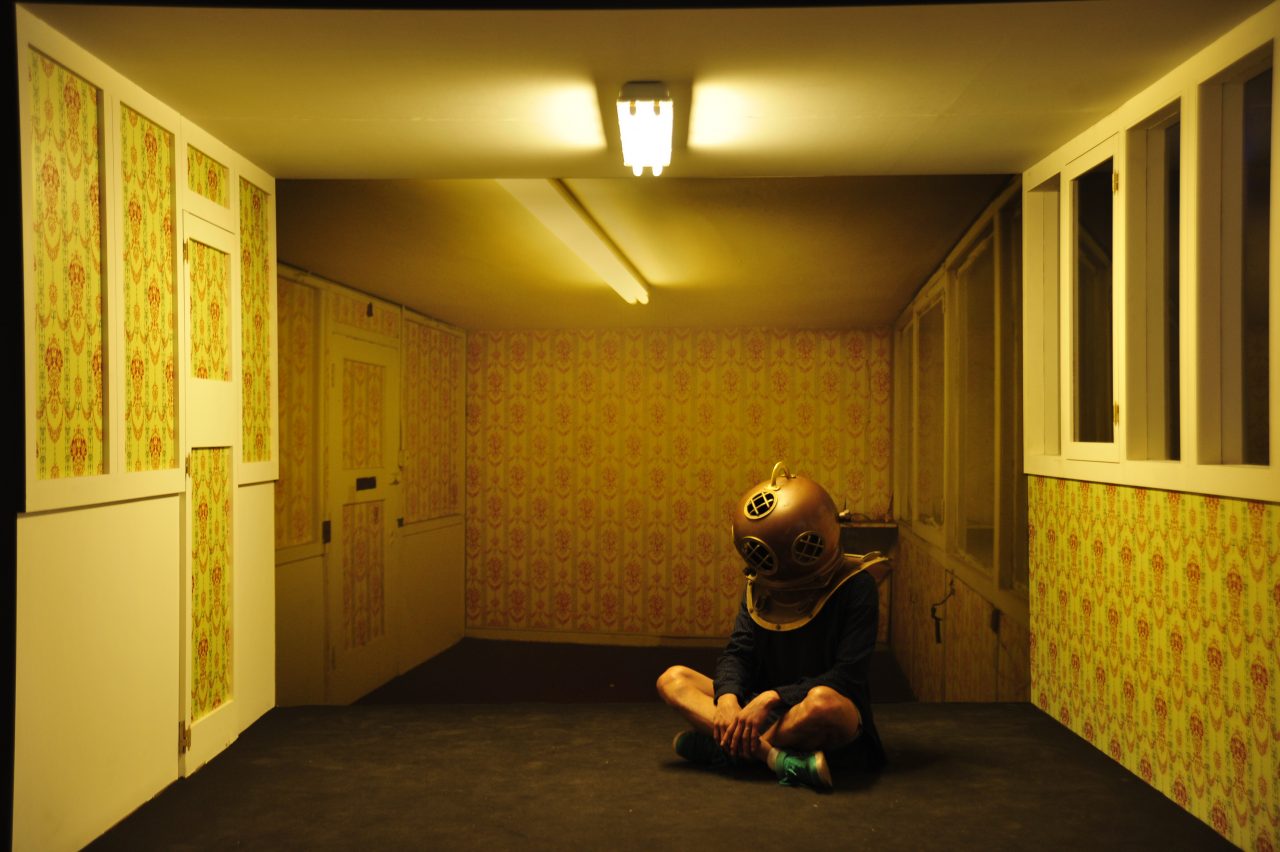
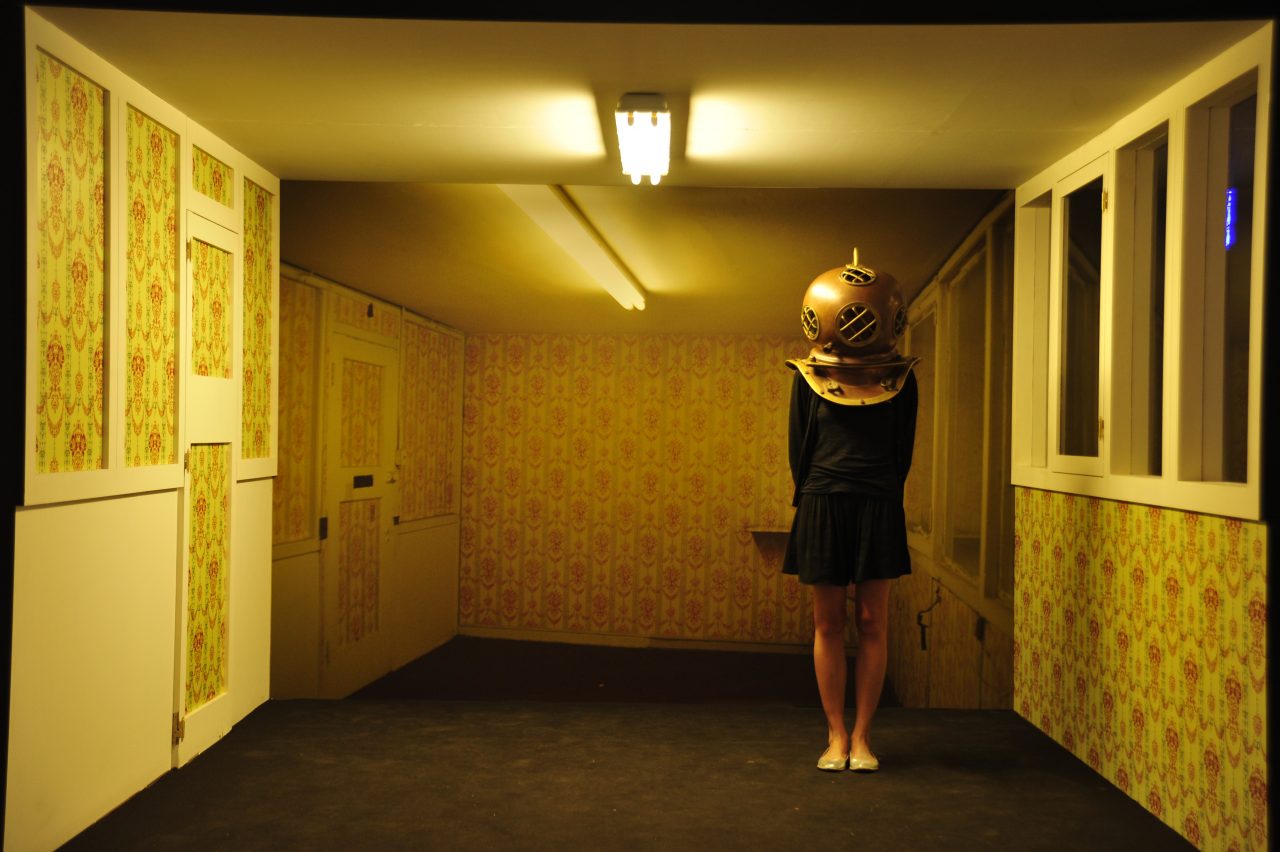
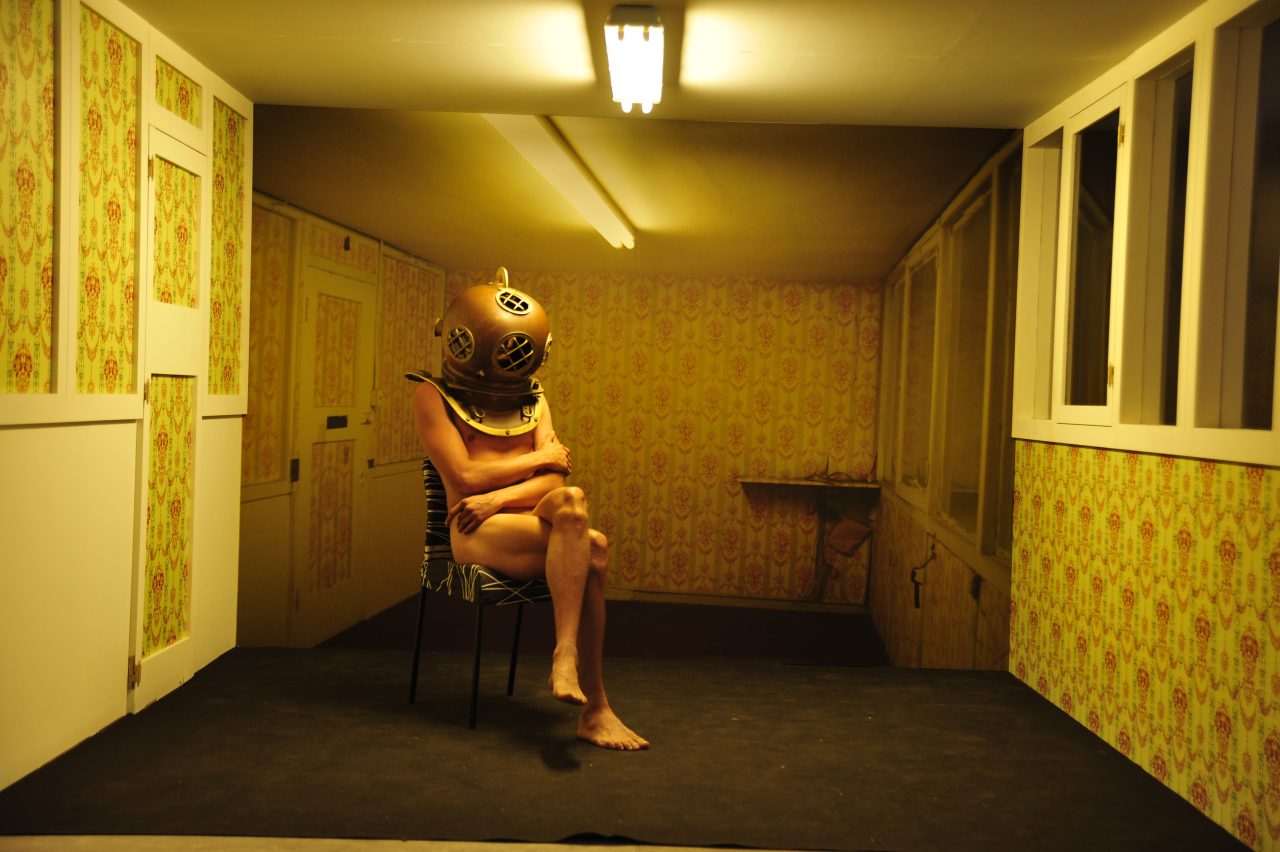
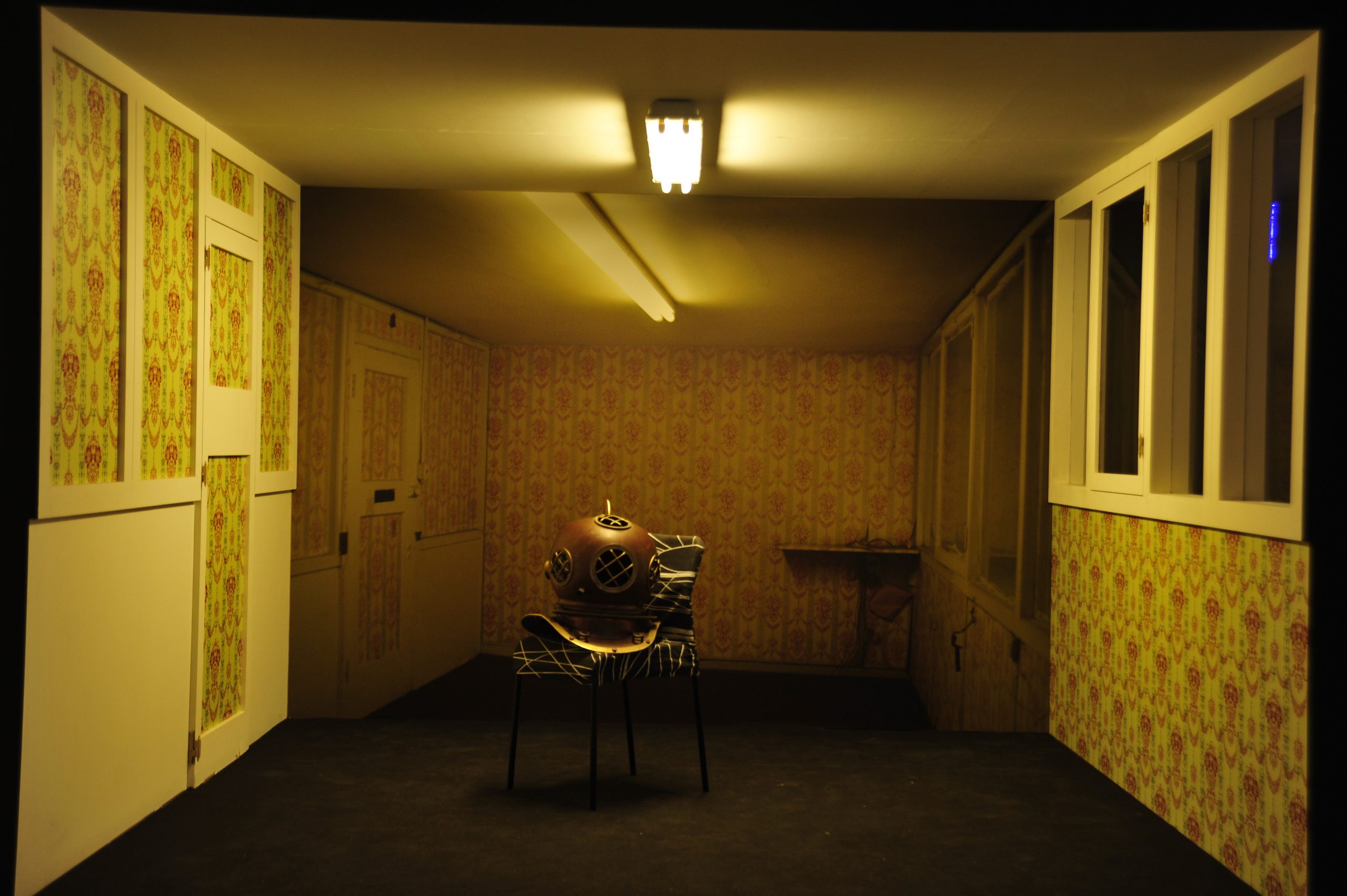
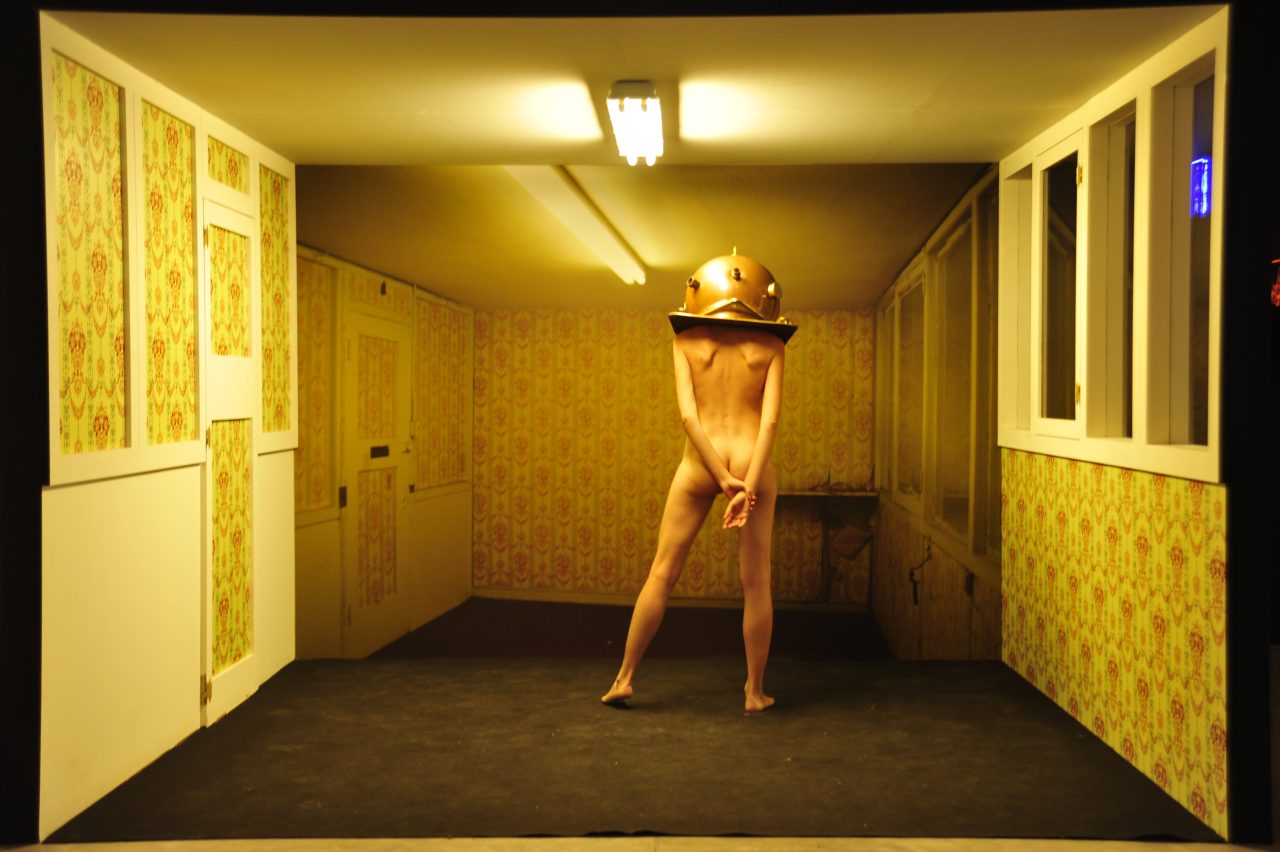
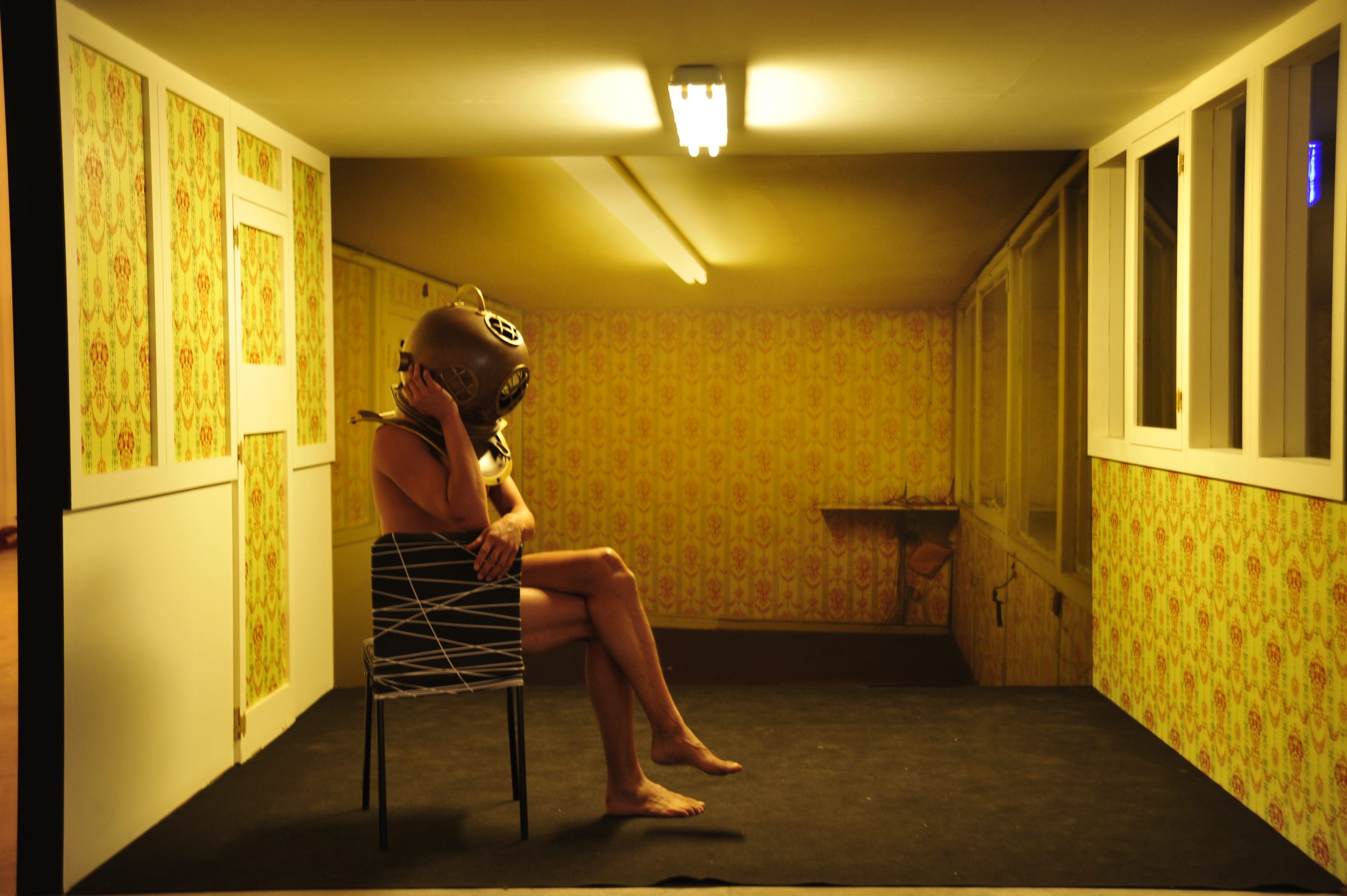
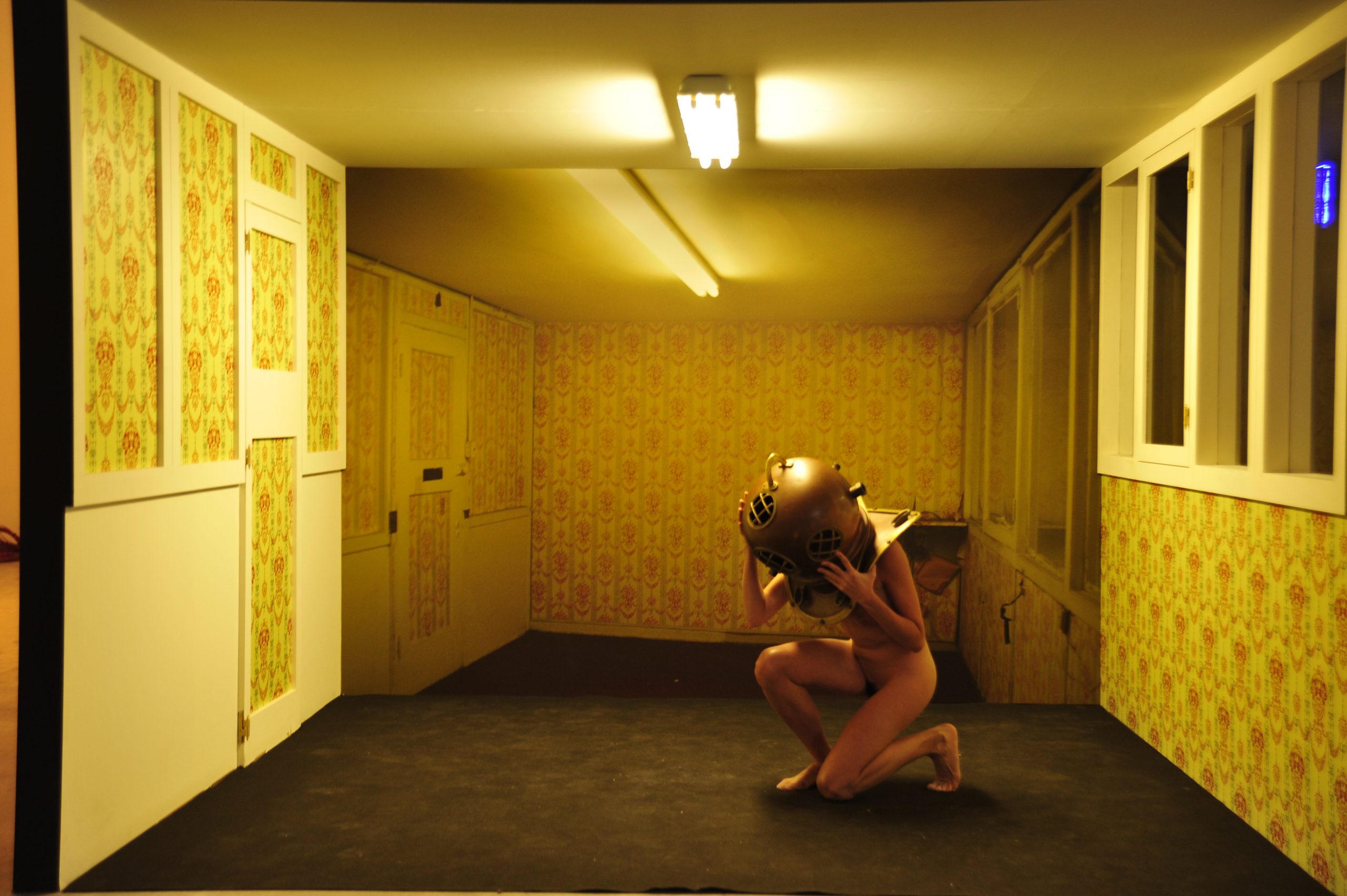
Video diptych
The Capital of Accumulation is a video installation that writes an oblique narrative of the relationship between metropolises and the world in counterpoint to Rosa Luxemburg’s exceptional critique of global political economy, ‘The Accumulation of Capital’. The work, a 50 minute long video diptych, trawls through a haunting, dream like landscape straddling Warsaw, Berlin and Bombay/Mumbai to produce a riff on cities, capitalism and the twentieth century’s turbulent history. Part natural history, part detective journal… part forensic analysis, part cosmopolitan urban investigation…and part philosophical dialogue……”The Capital of Accumulation” offers a considered and personal reflection on the remaining possibilities for radical renewal in our times.






Found furniture, index cards, words, plaques, electronic word displays, text and a scenario
The Bureaux of Raqs and Faqs takes the form of an onsite performance installation. It takes off from the fact that one of the ways in which the word ‘Raqs’, in the name of the collective, has been sometimes mistakenly parsed is as the acronym RAQS, ‘Rarely Asked Questions’, as opposed to ‘FAQS’ or ‘Frequently Asked Questions’. FAQS and RAQS both figure in the patois of early websites, the literature of popular electronics and computer manuals. Typically they denoted ways in which information-devices and technology driven platforms interacted with visitors, offering solutions to frequent, or rare, problems and questions.
Raqs take the ‘query and response’ mode of RAQS and FAQS to devise a scenario where members of the public can ask an exhibition docents trained by Raqs to answer any possible questions. The ‘respondent’ sits at one of two office tables, each under an electronic sign saying either ‘BUREAU of RAQS’ or ‘BUREAU OF FAQS’. The ‘BUREAU of FAQS’ is perpetually ‘OUT TO LUNCH’ (a sign on the table says so). The ‘respondent of the Bureau of Rarely Asked Questions evaluates the visitor’s query to determine whether or not it is a RAQ or an FAQ (basically a question too banal to be answered).
If it is found to be an FAQ, the enquirer is referred to the ‘BUREAU of FAQS’ – where no one is present to take the question. If the question is deemed an RAQ, then the respondent chooses an index card from amongst four cartons of index cards that bear hypothetical ‘answers’ to any questions that incorporate any of the the words – ‘what, where, how, why and when’ . The respondent chooses an answer that he or she thinks is adequate to the poise, elegance and acuity of the given rarely asked question. Sometimes, a conversation ensues.
Reverse Engineering the Euphoria Machine
Installation with furniture, 2 videos, objects, drawings, photographs
Euphoria Machine is the name we give to the apparatus of desire and cognition that seeks to create a consensus within society for boundless energy and wealth, and effaces all doubts and dissent about the ways in which this energy and wealth must be acquired. The material that fuels the Euphoria Machine is desire, more specifically it is a particularly frenetic form of the quest for energy, happiness and satisfaction that overrides all other considerations.
Sometime after the second World War, Edward Louis Bernays, a nephew of Sigmund Freud, a key strategist of war-time propaganda campaigns and the intellectual god-father of the advertising and public relations industry, applied a key discovery he had made during the fashioning of war propaganda to the future success of Capitalism. The discovery was this – in no other war in Human History, had wars been fought in the name of democracy, peace and prosperity. They had been fought for land, for the expansion of a particular dynasty or ruling groups power, for religious zeal and for other concretely political purposes. The propaganda campaigns of the Second World War however, successfully named a different kind of motivation for war – the desire for happiness, peace, prosperity and liberty. The identification of common virtues with the war machine proved to be a very successful motivator.
Once the war ended, Bernays realized that the same process could be replicated in ‘peacetime’ only this time, people must be made to realize that contributing their labour to capital, or buying goods that they did not necessarily need (in order to keep the machine of capital running) could also be done by identifying these acts with basic human drives for beauty, health, happiness, love, joy and contentment. So, people were told that they could feel a profound happiness, if they bought a shoe, or went to work in a call centre. This was a subtle but significant shift, in that it divorced a good from its function. A shoe, for instance was no longer something that covered and protected your feet, instead, it became a key to your personal well being. A job was no longer something you did to earn a living, it became a mark of your special identity as a human being. The building blocks of Capital were internalized as personal drives.
Acrylic, MDF, red LEDs, electrical wires, gold mylar sheet
Marks offer a luminous typographic annotation to the political imagination. The illuminated shapes produced by the array of red light bulbs suggest an arresting configuration of orthographic devices – a question mark and an exclamation sign – that couple to form an echo of the hammer & sickle sign. The work bathes the entrance to the foyer in red light, and finds itself reflected on many of the surfaces that surround it. By having questions marks and exclaimation marks perform the hammer & sickle sign, ‘Marks’ (a play on the name ‘Marx’) reiterates and celebrates the legacy of asking questions and articulating deeply felt human desires.



Words, Clock-face Design on Vinyl
What begins with our eyes, travels to the brain, courses to our heart, and then returns to our eyes. Reading a feeling or a moment is something that happens between different aspects of consciousness. Reading off the walls and billboards of cities, we become the words we think we feel, and yet, even as we look up or out to search for them, they always catch us unawares. We find ourselves, besides ourselves, meanwhile, elsewhere.
Meanwhile Elsewhere is an array of billboards and posters scattered across the urban landscape of Dhaka. Each billboard shows a clock-face that features words or phrases that relate to each other, possibly in counter-point. Taken together, the billboards produce a set of permutations and combinations of states of mind and being through an invocation of the actions of the hour and minute hands in a clock.
Tracing the path of these word-pairs through the city of Dhaka was like following a found poem on the streets. The completion of the thought set out in any one poster or billboard will require one to read its scattered shadows on other posters, other places. The lexical patterns produced by this process register a deeply felt, subjective experience of time and duration.
Meanwhile Elsewhere (Fear and Understanding) grows out of Raqs Media Collective’s continued pre-occupation with time and with the metaphorical possibilities of horology.



Fibreglass print (160 x 92 x 320 cm)
Albrecht Dürer came across rumors of the Indian rhinoceros named Gainda sometime in 1515 that he would immortalize in his woodcut, Rhinoceros. Gainda the rhinoceros, far from his native habitat in the grasslands of Gujarat (where no rhinoceroses remains today), was sadly lost at sea while being transported, in time, from Lisbon to the Vatican.
The Gulbenkian Gardens stand on a piece of land that was once used for a fun-fair. What is now a quiet and serene garden, an organic machine designed for leisurely contemplation, would once have been a busy, bustling, noisy site for the carnivalesque, for flirtation, and for the pursuit of thrills. The sudden re-appearance of Gainda the lost rhinoceros in the Gulbenkian Gardens allows the space to be haunted by its own past.
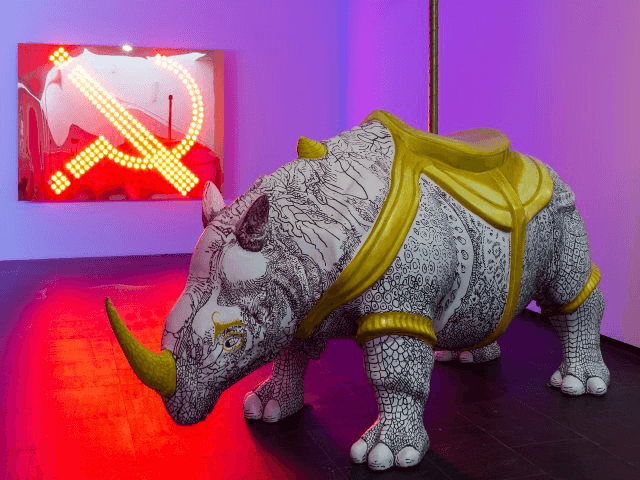
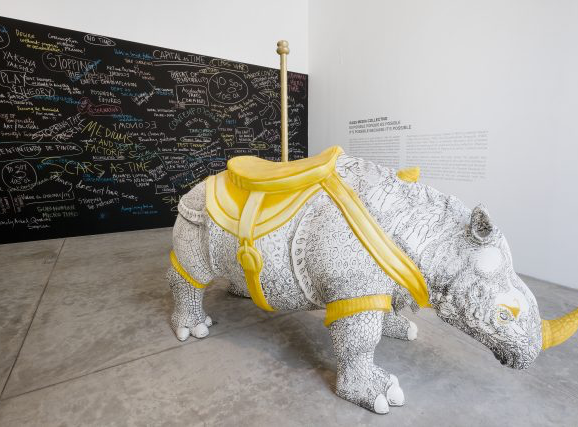
Text, lightbulbs, fixtures, acrylic, wire, synchroniser
Revoltage fills the space it occupies with warmth, light, and the charge of an idea that embraces both celebration and rage. It suggests the energy, or “voltage,” of what it means to revolt, to commit oneself to humanity. The letters join to suggest an incandescent hybrid between electricity and uprising – alternately illuminating the words “Revolt” and “Voltage” through a fluctuating electrical current in order to coin a new thought, “Revoltage”. Revoltage registers first as an after-image (the kind we see when we shut our eyes after looking at a strong source of light), and then as a subliminal suggestion within our consciousness to brighten our days with the brilliance of a form of truant, rebel power that refuses to either name itself or be named into domesticity.
A cascade of black and red wiring (anarchy’s traditional colours) makes its way down from the multitude of light bulbs that make up the word, and flows along its length on the ground. The bunched wires merge and divide like a map of the tributaries of a mighty, turbulent river before disappearing into the shadowy darkness behind the work. By representing the transport of the electrical energy that fuels the work, the wires evoke the way in which ordinary people all over the world have flooded their cities in recent times (in Cairo, New York, Athens, Madrid, Moscow, Tel Aviv, and elsewhere), like rivers in spate, electrifying global consciousness with the actualisation of a new politics, carrying with them the charge of a new mode of being human.
With Revoltage, Raqs have begun writing a new glossary for these times.




Ephemeral event with Time, table settings, Wine, Index Cards, Curated Texts, Conversation
A quorum of players face off across a long well lit table over an abundant flow of wine in a play of words and thought. Around them is a theater full of listeners, witnesses to time. A scenario involving intoxication and conversations about time unravels through the course of the evening. A few millennia of thoughts on time gather in the voices of the players.The experience shrink, expands, dances, becomes fugitive and gentle, yearns for and escapes definition. You cannot leave the room, or the table, regardless of whether you are actor or witness, unchanged by time.


